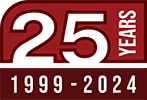Personal property memorandum: A valuable bit of do-it-yourself estate planning
Marking up or adding pages to your will or trust, on your own, is almost never a good idea. But there is one bit of do-it-yourself estate planning that you should seriously consider.
As we progress through life, changes in our situation and how we want our assets to be managed and distributed often give rise to changes in our estate planning documents. (See our popular article, “Has Your Estate Plan Aged as Gracefully as You?”)
Because some changes seem minor and easily made, we occasionally are asked by estate planning clients whether they can make a minor tweak to the will or trust that we prepared for them. Our usual answer: Yes, in theory you can – but you have to be really careful. First, tell me what you want to change …
As tempting as it may be to make a first-hand revision to one’s estate planning documents, and as easy and harmless as it might seem, you should bear in mind that faulty documents – including documents that started out in good condition but were inadvertently corrupted – are a leading cause of estate- and inheritance-related lawsuits and family legal squabbles.
Sometimes the damage was done by the changes per se, such as creating a conflict with another provision of the plan, adding a provision that cannot be carried out, or lacking clarity with respect to the maker’s intent.
Or, even if the changes themselves didn’t cause a problem, they weren’t properly executed, witnessed and/or notarized.
In most cases, asking your estate planning attorney to make a minor change to a will or trust shouldn’t be an expensive proposition. Before you start marking up your documents, at least check with your attorney to:
- tell him or her what you want to accomplish (there might be a better way to achieve your objective), and
- get a fee estimate (revisions made by your attorney now will almost certainly cost less than scorched-earth litigation after you are gone).
A GOOD DO-IT-YOURSELF IDEA
In case you are thinking that the purpose of this article is to preserve our monopoly in the field of document management, let’s shift the focus to a documentation role that you are uniquely qualified to fill, all by yourself: creating a personal property memorandum.
A personal property memo is a document that is separate from, and in addition to, your will or trust. It allows you to specify which items of tangible personal property (described below) are to go to which recipients.
“Tangible personal property” includes things like furniture, jewelry, clothing, antiques, art, collectables, memorabilia, equipment, accessories, etc. In some states, including Arizona, it can include cars, aircraft, boats and other licensed vehicles.
Tangible personal property does not include real estate, cash, bank accounts, investment accounts, debt instruments, intellectual property, insurance policies, or intangible assets, such as LLC interests or corporate stock.
You can write a personal property memorandum at any time after you write your Will, but you will want to be sure your Will references the fact you may create a separate personal property memo and incorporates that memo by reference.
Your memo can be very simple, but it needs to be clear. You can hand-write the memo, or type it and print it out. A typical personal property memo simply references the particular piece of tangible personal property and who you want to receive it.
Also, the memo has to be signed by you, but your signature doesn’t have to be witnessed or notarized. And you can change your memo whenever you want, as often as you want, without disturbing your will or trust. If you want to make changes, don’t mark up your existing memorandum; rather, make a new memorandum and destroy any previous versions.
You should either keep your personal property memorandum with your other estate planning documents, or leave a note with those documents that tells your trustee or personal representative where to find your memo.
Finally, even if your will or trust calls for leaving everything to one person (such as your spouse), a personal property memo can still be useful, in case your spouse passes away before you do. Also, in case you contemplate leaving everything to your children, to be divided among them, a personal property memo spares your personal representative or trustee the challenge of making equitable distributions, and it helps prevent intra-family conflicts over who was promised what.


